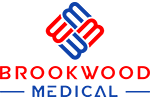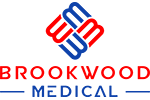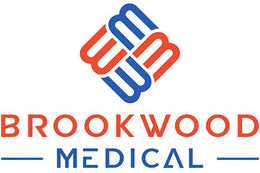The Future of Mask Technology: Innovations and Insights

As we step into a new era of health and safety, the future of mask technology is brighter than ever. Masks have become essential in our daily lives, and the innovations surrounding them are evolving rapidly. From advanced materials to smart technology, there’s no doubt that the world of protective gear is transforming. In this article, we will explore the future of mask technology, focusing on innovations, benefits, and the integral role of ear protectors for masks in enhancing user experience.
The Evolution of Masks: A Quick Overview
To understand where we are headed, it’s crucial to take a brief look back at how masks have evolved. Traditionally, masks were designed mainly for medical professionals, but the COVID-19 pandemic brought them into the mainstream. This transition has fueled a surge in mask technology innovations aimed at improving comfort, efficacy, and user compliance.
Type of Masks and Their Features
The types of masks available today each have unique features designed to meet specific needs. Here are some commonly used types:
- Cloth Masks: These are washable and reusable, often made from multiple layers of fabric.
- Disposable Masks: Commonly used in healthcare settings, made from non-woven materials.
- N95 and FFP2/FFP3 Masks: These offer higher filtration efficiency and are crucial for high-risk environments.
- Smart Masks: Equipped with sensors and connectivity features, these masks can monitor air quality and track exposure levels.
As we look to the future, innovations in these categories will likely redefine what we expect from protective face coverings.
Emerging Technologies in Mask Design
The future of mask technology promises to bring forth exciting advancements. Some of the most significant developments include:
Self-Sterilizing Materials
A breakthrough in mask technology is the development of self-sterilizing materials. These materials can neutralize pathogens upon contact, significantly reducing the risk of virus transmission. Imagine wearing a mask that actively protects you by deactivating harmful microbes!
Enhanced Filtration Systems
Filtration technology is advancing rapidly. Future masks might employ advanced filters that not only block airborne particles but also actively capture and neutralize viruses. This could be especially beneficial for healthcare workers and those in crowded environments.
Wearable Technologies
Smart masks are on the horizon, integrated with biosensors that can monitor the wearer’s vital signs, respiratory rate, and air quality. These features will allow users to gain insights into their health while ensuring they are breathing clean air.
The Role of Comfort in Mask Adoption
One of the biggest challenges faced by mask technology is user comfort. Prolonged mask usage can lead to discomfort, irritation, and fatigue. Innovations aimed at enhancing comfort will be crucial for widespread adoption of masks in daily life.
Ergonomic Designs
Future mask designs will focus on ergonomics, providing a snug yet comfortable fit. Features may include adjustable ear loops, flexible nose bridges, and lightweight materials that distribute pressure evenly. One significant innovation would be the development of ear protectors for masks, designed to alleviate strain on the ears, making it more comfortable for long-term wearers.
Breathability
As masks become more sophisticated, it’s essential that they remain breathable. Advances in fabric technology may lead to materials that provide adequate air circulation while still offering protection from harmful particles. Breathable masks could lead to increased compliance, ensuring that more people wear them regularly.
Eco-Friendly Mask Technology
As awareness of environmental issues grows, sustainable mask technology is becoming a priority. Future masks will likely utilize recyclable or biodegradable materials, reducing waste and environmental impact. This shift not only addresses health concerns but also aligns with global sustainability initiatives.
Reusable Masks with Lifespan Indicators
Imagine a reusable mask that alerts you when it's time to wash or replace it. Future developments may include lifespan indicators embedded within the mask, providing users with the knowledge required to maintain hygiene without compromising on sustainable practices.
The Importance of Regulatory Standards
As mask technology evolves, maintaining rigorous safety and efficacy standards will be crucial. Regulatory bodies will need to keep pace with innovations to ensure masks provide the promised level of protection.
Testing and Certification
Future masks may be subjected to more stringent testing protocols that assess biocompatibility, filtration capabilities, and wearability. Standards will need to evolve to incorporate new technologies while ensuring consumer safety and trust.
Public Awareness and Education
For new mask technologies to be adopted, public education is key. Consumers need to understand the benefits and limitations of various mask technologies. This relates not only to protection but also to comfort and ease of use.
Educating About Proper Use
As we introduce advanced mask technologies, educating the public about proper usage will be more important than ever. This includes guidance on how to wear masks correctly, when to replace them, and how to maintain their efficacy over time.
Global Perspectives on Mask Technology
Different regions adopt mask technology in various ways based on cultural, environmental, and health factors. Here's how mask technology is viewed globally:
Asia's Proactive Approach
In many Asian countries, wearing masks has been a common practice long before the global pandemic. This proactive approach has resulted in a higher acceptance of advanced mask technology, paving the way for more innovative solutions tailored to their needs.
Western Adaptation Post-Pandemic
In contrast, the Western world is adapting to wearing masks only recently, highlighting a need for brands to educate consumers on the importance of masks in routine health measures. The push for design and comfort innovations will likely be driven by user feedback and trends pioneered in Asia.
Looking Ahead: What Will the Future Hold?
The future of mask technology is brimming with potential. With the rapid pace of innovation, we can expect masks that do more than just serve as protective gear. They will become an integral part of our health and wellness toolkit.
Integration with Personal Health Devices
As wearable technology continues to evolve, integrating masks with personal health devices like smartwatches could become common. This will enable detailed monitoring of environmental conditions and personal health metrics.
Global Standardization
A potential future scenario might see the establishment of global standards for mask technology. This would enhance consumer trust and ensure that high-quality masks are accessible, regardless of geographical location.
Embrace the Change
As we look to the future of mask technology, it’s important to embrace the innovations on the horizon. With improvements in comfort, functionality, and eco-friendliness, masks will remain relevant in our lives even beyond the pandemic. By adopting changes such as ear protectors for masks and sustainably designed options, we can ensure a healthier, safer future.
In the end, the integration of mask technology into our daily lives represents more than just a response to a crisis; it's an evolution of our approach to health and safety. As consumers, staying informed about the advancements in mask technology and making educated choices will empower us to take charge of our well-being in this ever-changing world.






